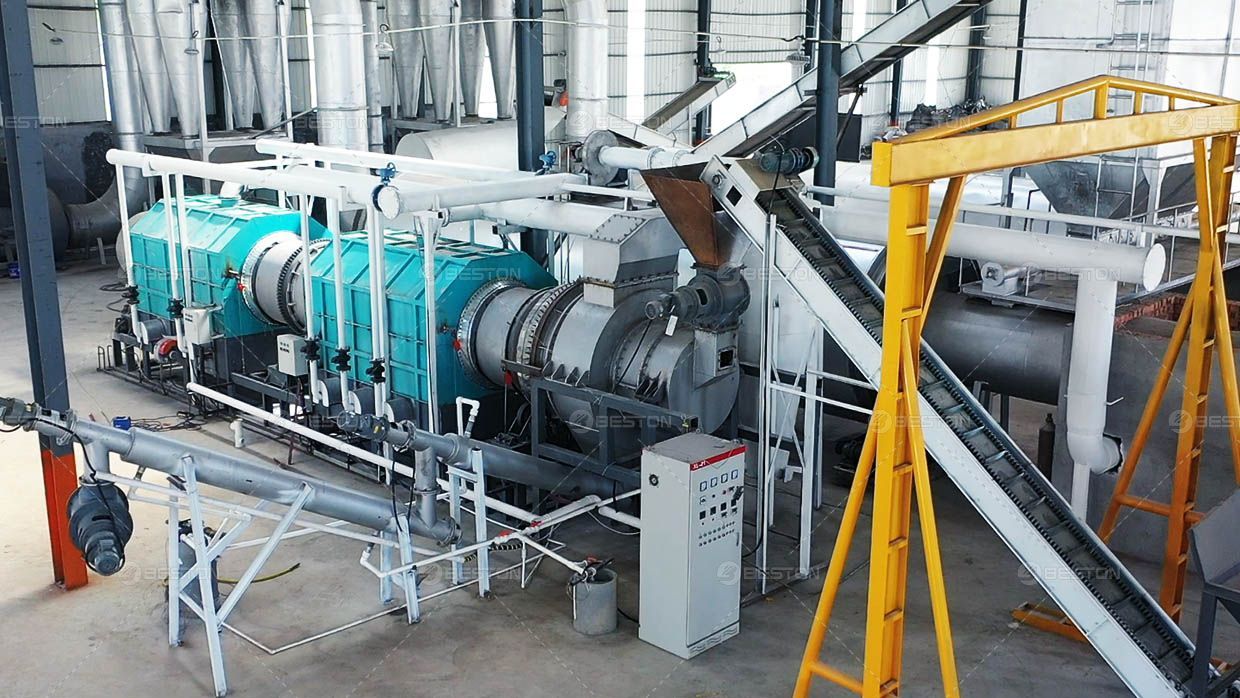Integrating Rice Husk Carbonization into Regenerative Agricultural Systems

Rice cultivation produces vast quantities of residual biomass, particularly rice husk, which often poses a disposal challenge. Converting this byproduct into biochar through carbonization not only mitigates waste but also offers substantial benefits to sustainable agriculture. The integration of a charcoal machine into this cycle creates a synergistic feedback loop—enhancing soil health while simultaneously sequestering carbon and reducing dependence on synthetic inputs.
Rice Husk: An Underutilized Biomass Resource
Rice husk, the protective outer layer of the rice grain, constitutes approximately 20% of total paddy weight. Traditionally burned or dumped, it contributes to air pollution and unmanaged landfill volume. However, due to its high lignocellulosic content and silica-rich structure, rice husk is a highly suitable feedstock for thermal conversion into biochar.
When subjected to pyrolysis in a controlled oxygen-deficient environment, rice husk undergoes thermochemical decomposition. A well-calibrated charcoal machine operating under specific parameters (typically 450°C–650°C) converts this biomass into a porous, carbon-rich substance with significant agronomic value.
Enhancing Soil Quality with Biochar
Once produced, rice husk biochar functions as a soil amendment with multifaceted benefits. Its intrinsic porosity and large surface area enhance soil aeration, water retention, and nutrient adsorption. These properties make it particularly useful in tropical or degraded soils, where conventional inputs quickly leach beyond root zones.
Biochar also acts as a physical habitat for microbial consortia. By providing refuge and attachment surfaces, it stabilizes microbial populations that are critical for nitrogen fixation, phosphorus solubilization, and organic matter decomposition. This microbial support mechanism enhances nutrient cycling efficiency and fosters long-term soil fertility.
Carbon Sequestration and Climate Mitigation
Unlike traditional combustion, which releases biomass carbon directly into the atmosphere as CO₂, carbonization through a rice husk charcoal machine results in a stable form of carbon that resists degradation for centuries. This permanence transforms biochar into a viable method of long-term carbon sequestration.
For every ton of rice husk converted, an estimated 250–300 kg of biochar can be generated, with a significant proportion of that mass composed of elemental carbon. When incorporated into soil, this biochar locks away carbon that would otherwise have returned to the atmospheric cycle—aligning with global goals for greenhouse gas reduction and climate resilience.
Closed-Loop Agricultural Integration
Deploying a charcoal machine near rice mills or within farming cooperatives facilitates a localized, circular economy. Rice husk, a byproduct of harvest, becomes a raw input for carbonization. The resultant biochar is reapplied to the same fields, reducing reliance on chemical fertilizers while improving crop resilience and yield consistency.
Such integration reduces transport emissions, promotes energy independence, and increases on-farm resource efficiency. Moreover, waste heat or syngas generated during pyrolysis can be captured and reused for drying grains or generating power, further amplifying energy efficiency across the supply chain.
Tailoring Biochar Characteristics to Agricultural Needs
The physicochemical properties of rice husk biochar can be adjusted by modifying carbonization parameters within the charcoal machine. For instance, lower temperature pyrolysis (around 400°C) retains more volatile compounds, yielding biochar with higher nutrient content but lower stability. Higher temperatures (>600°C) produce highly stable, carbon-dense material more suited for long-term sequestration and structural soil improvements.
Customizing these attributes allows agricultural practitioners to align biochar application with specific soil conditions, crop types, and climate factors. For saline soils, for example, high-alkalinity rice husk biochar can buffer pH and reduce sodium toxicity.
Economic Viability and Incentives
With carbon markets expanding, biochar from rice husk carbonization is gaining recognition as a quantifiable carbon sink. Producers using standardized methodologies can monetize their operations through carbon credit schemes, generating an additional revenue stream.
Simultaneously, farmers benefit from reduced fertilizer costs, enhanced crop performance, and improved soil water retention—especially crucial in regions facing erratic rainfall or drought stress. The capital investment in a charcoal machine can be offset through cumulative agronomic and environmental returns over time.



